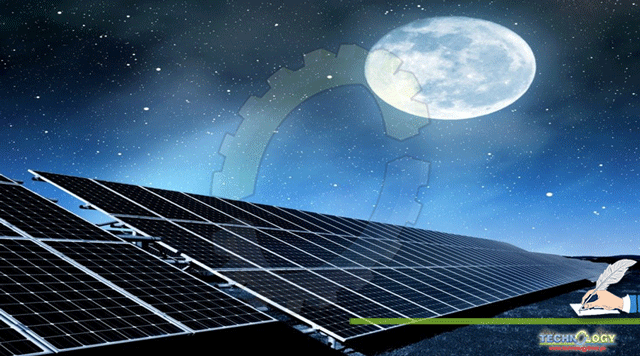Researchers at the University of California have developed a one-of-a-kind night solar panel (NSP) that can generate 50 W in ideal conditions at night, which is one-fourth of what normal solar panels can generate during the day.

By Abrar Ashraf
Solar panels are colder than night air, resulting in a temperature difference that may be utilized to generate power (electricity). As we know that when sun rays fall on the relatively cooler solar panel plate they cause electricity generation. The panel is made up of solar cells, which are layers of semiconducting materials, commonly silicon. When light strikes this semiconductor material, it generates an electric current.
However, the Solar panel emits heat to outer space, which has a temperature of about 3K (-270.15 centigrade), because heat always flows from higher temperatures toward lower temperatures. As a result, the solar panel is colder than the night air, creating a temperature differential that may be used to generate power. To do this, Shanhui Fan at Stanford University in California and his colleagues modified an off-the-shelf solar cell by adding a thermoelectric generator, a device that produces currents from temperature differences. “It turns out that the solar panel was a very efficient heat radiator. At night, the solar panel may achieve a temperature below that of the surrounding air, which is an exceptional possibility for power collecting.”
The enhanced solar cell produced 50 (milliWatt/meter2) of power when noticed in a clear night sky. During the day, this is just 0.04 percent of the power production of a conventional solar cell. But Low-power devices e.g. phone chargers or a low-wattage LED light would be able to operate with 50 milliwatts per square meter. “The good thing about this strategy is that you have a direct power supply at night that doesn’t require any battery storage.”
While night-time solar cells may be beneficial for some low-power applications in off-grid regions, their present performance makes them unlikely to replace existing generation capacity. According to Ken Durose of the University of Liverpool in the United Kingdom, “the potential for large-scale power generation is thus extremely small.” According to Shanhui Fan and his colleagues, the setup may be enhanced to create more power, and there are no inherent challenges in scaling up the system to a commercial product in the future.